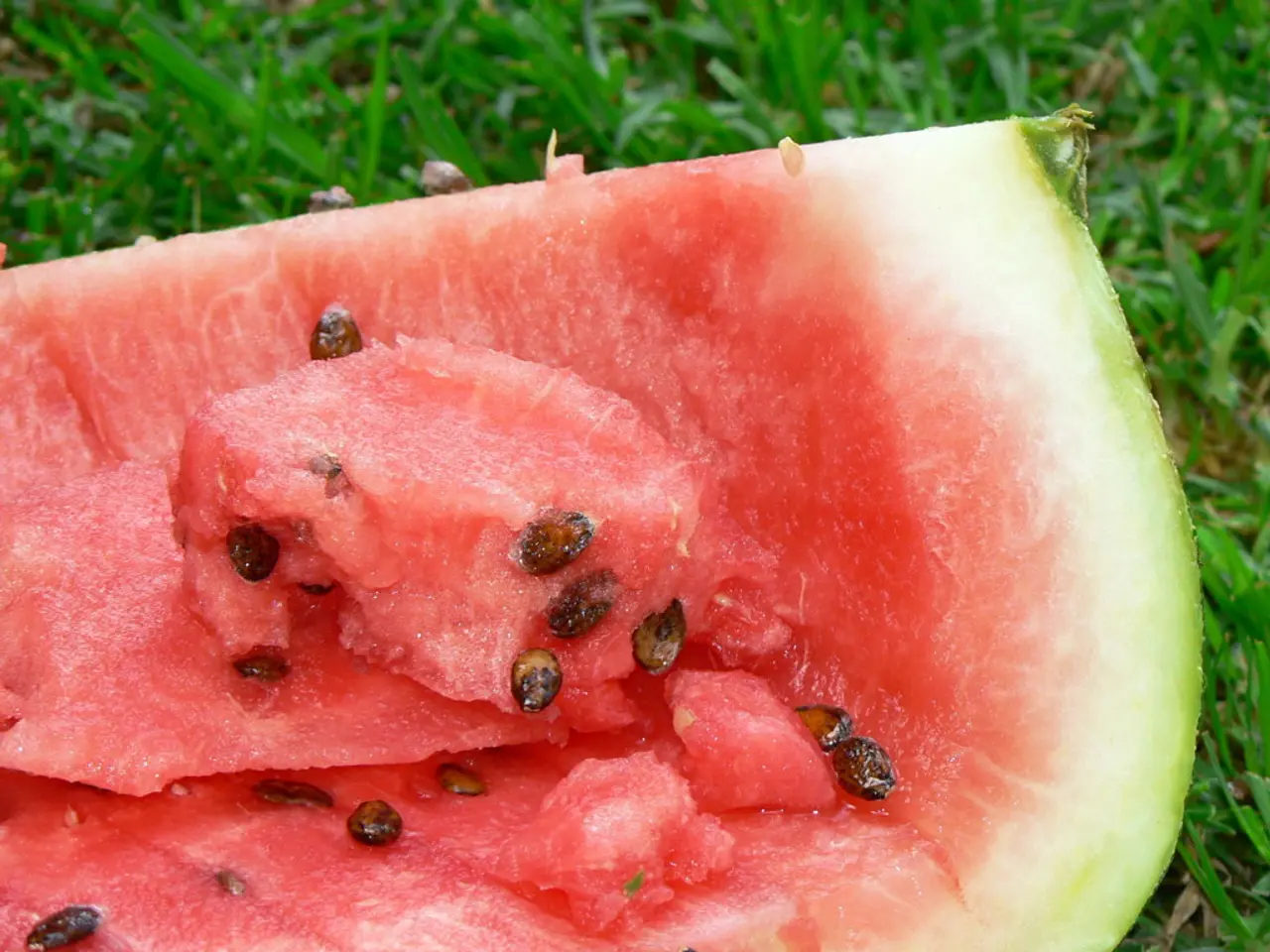Cultivating Watermelons: A Guide for Juicy Fruit throughout Summer
=====================================================
Watermelons, with their refreshing taste and hydrating properties, are a popular summer treat. If you're considering growing your own watermelons, here's a guide to help you get started.
Watermelons are annual plants that thrive in the right conditions. To bring fruit to maturity, they need at least 8 to 10 hours of direct sunlight daily.
When it comes to watering, watermelons need consistent moisture during the growing season, approximately 1 to 2 inches of water per week, including rainfall. It's essential to avoid overwatering, as this can cause problems like cracked melons and disease. Use irrigation methods that avoid wetting leaves, such as drip irrigation, to reduce fungal infections like powdery mildew.
Temperature is another crucial factor. Watermelons are heat lovers and should be planted outdoors only when the risk of frost has passed and soil temperatures are warm. They need warm days and nights above 60°F (16°C). In cooler climates or short growing seasons, start seeds indoors or grow in protected environments to ensure at least 85–95 days of warm weather for fruit maturation.
While specific humidity ranges are less documented for watermelons, avoiding overly wet foliage is crucial to prevent fungal diseases. Good air circulation helps reduce humidity around plants and disease incidence.
Watermelons prefer rich, well-draining, slightly acidic soil. Adding several inches of compost before planting improves soil fertility. Warmer soil benefits plant growth; in cooler climates, using black plastic mulch can warm the soil to promote early growth.
Watermelons are heavy feeders. Incorporating organic matter like compost and worm castings early in the season boosts leaf growth and fruit sweetness. Calcium sources (e.g., crushed eggshells or bone meal) help prevent blossom end rot, a disorder caused by calcium deficiency often linked to inconsistent watering.
Some common problems to watch out for include powdery mildew and other fungal diseases, blossom end rot, and cracked fruit caused by overwatering near fruit ripening. To avoid these issues, avoid overhead watering, keep leaves dry, and maintain consistent watering.
Watermelons take about 85 to 95 days to mature. In warm climates, plant after the frost risk; in cooler zones, start indoors and transplant after. Watermelons do not grow in size after maturity but continue absorbing water; water less near harvest to improve flavor and avoid cracking.
In summary, growing watermelons requires providing full sun, consistent yet carefully managed watering, warm temperatures, fertile and well-drained soil, and monitoring for diseases and watering-related disorders. In cooler climates, starting seeds indoors and soil warming techniques can extend the growing season. Reducing water near harvest enhances fruit quality across climates.
Lastly, be aware that aphids and cucumber beetles can attack watermelon plants, with late-planted crops being the most affected. By following these guidelines, you'll be well on your way to enjoying fresh, homegrown watermelons this summer!
Incorporating home-and-garden activities, consider growing watermelons to have a refreshing summer treat. To nurture these watermelons, maintain a lifestyle that provides them with 8 to 10 hours of direct sunlight daily, and approximately 1 to 2 inches of water per week, including rainfall, using drip irrigation to reduce fungal infections.





